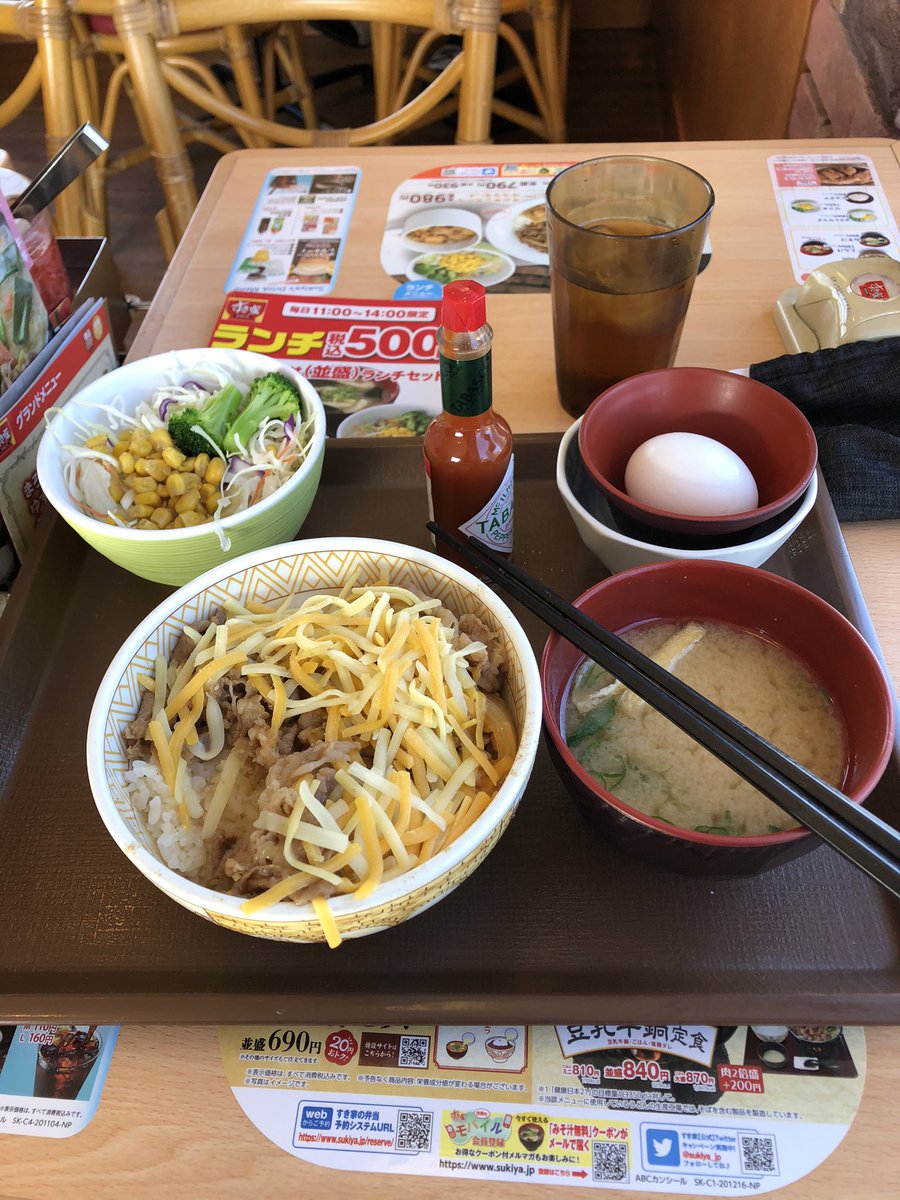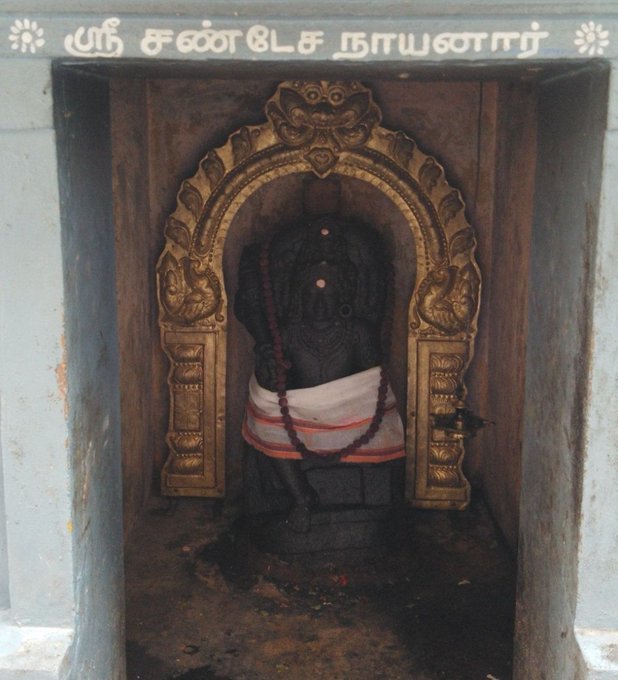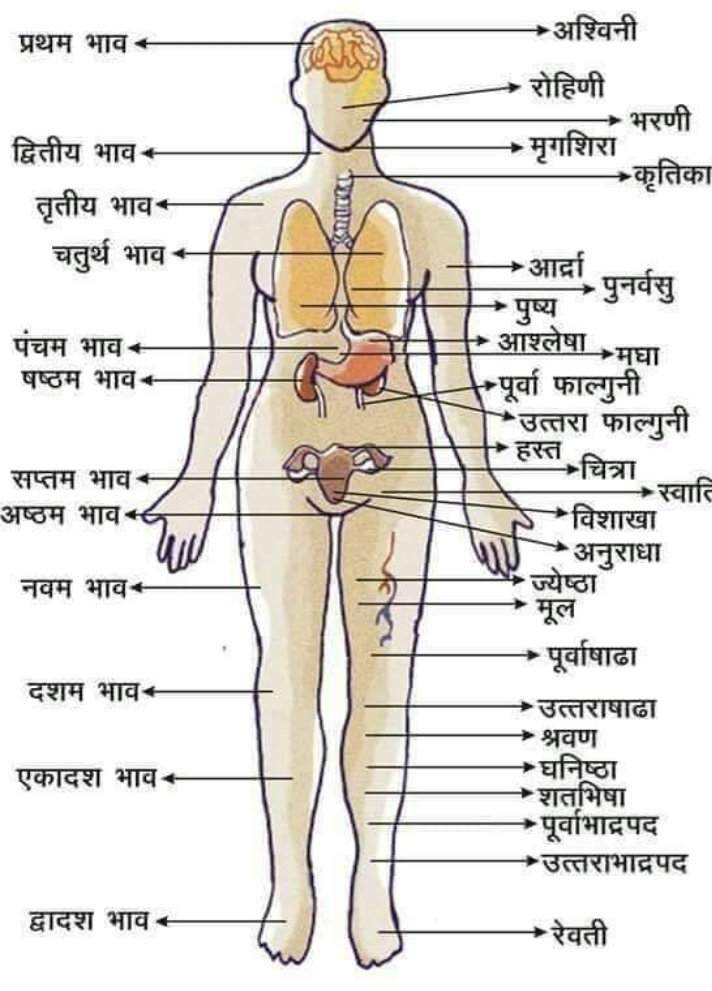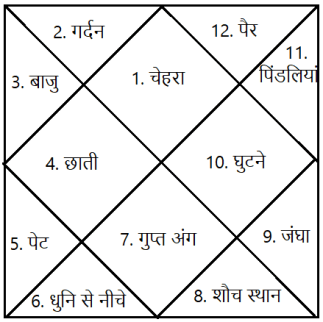This lunch is 500 yen ($4.80) at Sukiya, a Japanese fast food restaurant which belongs to a category with about three big competitors.
I love the aesthetics of this category and they’re under remarked upon.

They also are a wee bit of a cartel, and I appreciate the aesthetics of the cartel:
And the heads of the three chains got together, and decided that the price of the basic beef bowl needed to increase, but given the economic circumstances how could they hold the line.
“We are very sorry, given the economic environment, to raise the price from 165 yen to 180 yen, but we are doing our level best to keep it there, and have mutually decided that approximately one yen of margin is appropriate.”
If your offering is “I plate a bit of five big pots of things I cooked in the morning and keep heated as serving temperature all day” you can get the offering almost arbitrarily cheap.
Explains bowls, curry, etc
More from Patrick McKenzie
More from Food
#bkdk sfw, drabble
-🍛
"Suprise, Kacchan!"
Izuku happily wiggles, hopping from one foot to the other like an excitable toddler, despite the fact that he's 6 foot something and a venerable powerhouse of a pro hero.
In his hand is a plate of… something… messy from each edge.
There's a message written on top in some sort of sauce, but the sauce had gotten absorbed in the rice. The mishmashed mush of vegetables (?) kind of looked like something you would pull out of a shower drain.
But the meat looks good? Browned chicken, maybe a little overspiced.
"The hell's this?"
"I made you dinner!" Izuku ushers Katsuki towards the dining table, hardly letting him take off his jacket first.
As soon as Katsuki sits, a napkin gets shoved in his lap as if they're at a fancy restaurant. Izuku becomes a whirlwind, flitting this way
and that in their home until there are a number of candles lit.
It would make the ambiance more romantic if it wasn't still daylight outside. It was closer to lunchtime than dinner, but Katsuki would let him have this.
He, instead, stares down at [the meal] and carefully schools his features. He isn't sure if he looks deadpan or intrigued like he means to, because as soon as he looks close, the veggies /jump/ on the plate, bubbling like they're still boiling.
-🍛
"Suprise, Kacchan!"
Izuku happily wiggles, hopping from one foot to the other like an excitable toddler, despite the fact that he's 6 foot something and a venerable powerhouse of a pro hero.
In his hand is a plate of… something… messy from each edge.
uwu Katsuki forcing himself to eat Deku's shitty meals \U0001f91f\U0001f62b and not telling the other that it sucks
— \U0001f4a5\U0001f966CHUBBY DEKU CONNOISEUR\U0001f966\U0001f4a5 (@WeebTrash04) January 9, 2021
There's a message written on top in some sort of sauce, but the sauce had gotten absorbed in the rice. The mishmashed mush of vegetables (?) kind of looked like something you would pull out of a shower drain.
But the meat looks good? Browned chicken, maybe a little overspiced.
"The hell's this?"
"I made you dinner!" Izuku ushers Katsuki towards the dining table, hardly letting him take off his jacket first.
As soon as Katsuki sits, a napkin gets shoved in his lap as if they're at a fancy restaurant. Izuku becomes a whirlwind, flitting this way
and that in their home until there are a number of candles lit.
It would make the ambiance more romantic if it wasn't still daylight outside. It was closer to lunchtime than dinner, but Katsuki would let him have this.
He, instead, stares down at [the meal] and carefully schools his features. He isn't sure if he looks deadpan or intrigued like he means to, because as soon as he looks close, the veggies /jump/ on the plate, bubbling like they're still boiling.
You May Also Like
Krugman is, of course, right about this. BUT, note that universities can do a lot to revitalize declining and rural regions.
See this thing that @lymanstoneky wrote:
And see this thing that I wrote:
And see this book that @JamesFallows wrote:
And see this other thing that I wrote:
One thing I've been noticing about responses to today's column is that many people still don't get how strong the forces behind regional divergence are, and how hard to reverse 1/ https://t.co/Ft2aH1NcQt
— Paul Krugman (@paulkrugman) November 20, 2018
See this thing that @lymanstoneky wrote:
And see this thing that I wrote:
And see this book that @JamesFallows wrote:
And see this other thing that I wrote:
#sculpture #story -
Chandesha-Anugraha Murti - One of the Sculpture in Brihadeshwara Temple at Gangaikonda Cholapuram - built by Raja Rajendra Chola I
This Sculpture depicts Bhagwan Shiva along with Devi Paravathi blessing Chandeshwara - one of the 63 Nayanmars.
#Thread

Chandeshwara/Chandikeshwara is regarded as custodian of Shiva Temple's wealth&most of Shiva temples in South India has separate sannathi for him.
His bhakti for Bhagwan Shiva elevated him as one of foremost among Nayanmars.
He gave importance to Shiva Pooja&protection of cows.

There are series of paintings, illustrating the #story of Chandikeshwar in the premises of
Sri Sathiyagireeswarar #Temple at Seinganur,near Kumbakonam,TN
Chandikeshwara's birth name
is Vichara sarman.He was born in the village of Senganur on the banks of River Manni.

His Parent names were Yajnathatan and Pavithrai.
Vichara Sarman was a gifted child and he learnt Vedas and Agamas at a very young age.
He was very devout and would always think about Bhagwan Shiva.
One day he saw a cowherd man brutally assaulting a cow,Vichara Sarman could not tolerate this. He spoke to cowherd: ‘Do you not know that the cow is worshipful & divine? All gods & Devas reside in https://t.co/ElLcI5ppsK it is our duty to protect cows &we should not to harm them.

Chandesha-Anugraha Murti - One of the Sculpture in Brihadeshwara Temple at Gangaikonda Cholapuram - built by Raja Rajendra Chola I
This Sculpture depicts Bhagwan Shiva along with Devi Paravathi blessing Chandeshwara - one of the 63 Nayanmars.
#Thread

Chandeshwara/Chandikeshwara is regarded as custodian of Shiva Temple's wealth&most of Shiva temples in South India has separate sannathi for him.
His bhakti for Bhagwan Shiva elevated him as one of foremost among Nayanmars.
He gave importance to Shiva Pooja&protection of cows.

There are series of paintings, illustrating the #story of Chandikeshwar in the premises of
Sri Sathiyagireeswarar #Temple at Seinganur,near Kumbakonam,TN
Chandikeshwara's birth name
is Vichara sarman.He was born in the village of Senganur on the banks of River Manni.

His Parent names were Yajnathatan and Pavithrai.
Vichara Sarman was a gifted child and he learnt Vedas and Agamas at a very young age.
He was very devout and would always think about Bhagwan Shiva.
One day he saw a cowherd man brutally assaulting a cow,Vichara Sarman could not tolerate this. He spoke to cowherd: ‘Do you not know that the cow is worshipful & divine? All gods & Devas reside in https://t.co/ElLcI5ppsK it is our duty to protect cows &we should not to harm them.






























